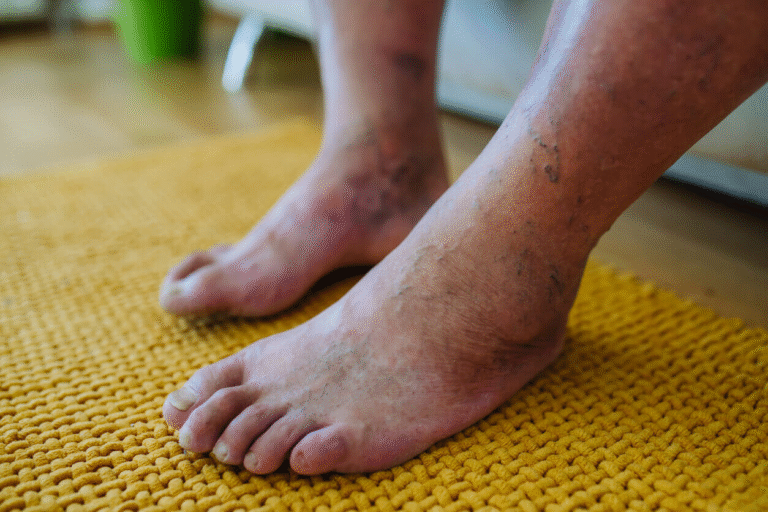Top 5 Common Foot Conditions and How to Treat Them
Our feet are essential for movement, stability, and overall mobility. However, many people suffer from common foot conditions that can cause pain, discomfort, and even affect their ability to walk. Understanding these conditions, their symptoms, and available treatments can help you manage and alleviate foot pain effectively. Here are the top 5 common foot conditions and how to treat them.
1. Plantar Fasciitis
What is it?
Plantar fasciitis is one of the most common causes of heel pain. It occurs when the plantar fascia, the thick band of tissue that runs across the bottom of your foot and connects your heel bone to your toes, becomes inflamed. This often results in sharp pain in the heel, especially with the first steps after waking up or after long periods of sitting.
Treatment:
- Rest and Ice: Reduce inflammation by resting your foot and applying ice to the affected area.
- Stretching Exercises: Regularly stretching your calves, hamstrings, and the bottoms of your feet can relieve pressure on the fascia and reduce pain.
- Proper Footwear: Supportive shoes with cushioning and arch support can help distribute weight more evenly, reducing pressure on the heel.
- Orthotics: Custom-made insoles can provide added support and relieve pressure on the plantar fascia.
- Physical Therapy: In some cases, a physical therapist can guide you through exercises to strengthen your foot and improve flexibility.
- Anti-inflammatory Medications: Over-the-counter medications like ibuprofen can help reduce pain and swelling.
2. Bunions
What is it?
A bunion is a bony bump that forms at the base of the big toe. It occurs when the bones in the front part of the foot move out of alignment, causing the big toe to angle toward the second toe. Bunions can be painful and may cause swelling and redness at the site of the bump.
Treatment:
- Footwear Adjustments: Wear shoes with a wide toe box to prevent pressure on the bunion. Avoid tight or narrow shoes that squeeze the toes.
- Padding and Cushions: Bunion pads can help reduce friction and provide cushioning for the bump, easing discomfort.
- Orthotics: Custom-made insoles can improve foot alignment and reduce pressure on the bunion.
- Ice and Anti-inflammatory Medications: Ice can help reduce swelling, and over-the-counter medications can alleviate pain and inflammation.
- Surgery: In severe cases, surgery may be required to realign the bones and remove the bunion.
3. Achilles Tendonitis
What is it?
Achilles tendonitis is an inflammation of the Achilles tendon, the large tendon that connects the calf muscles to the heel bone. This condition is often caused by overuse, especially in people who engage in activities like running, jumping, or excessive walking.
Treatment:
- Rest and Ice: Taking a break from activities that stress the Achilles tendon and applying ice can help reduce inflammation.
- Stretching and Strengthening: Gentle stretching of the Achilles tendon and calf muscles can improve flexibility and reduce strain. Eccentric exercises (lowering your body slowly after raising your heel) can strengthen the tendon.
- Supportive Footwear: Shoes with proper cushioning and arch support can relieve strain on the Achilles tendon.
- Orthotics: Custom insoles can help improve alignment and reduce stress on the tendon.
- Anti-inflammatory Medications: Over-the-counter pain relievers can reduce inflammation and pain.
- Physical Therapy: A physical therapist can guide you through rehabilitation exercises to strengthen the tendon and prevent future injury.
4. Ingrown Toenails
What is it?
An ingrown toenail occurs when the edge of a toenail grows into the surrounding skin, causing pain, swelling, and sometimes infection. It most commonly affects the big toe and can be caused by improper nail trimming, tight footwear, or trauma to the toe.
Treatment:
- Soaking: Soak your foot in warm, soapy water to reduce swelling and soften the nail.
- Proper Nail Trimming: Trim nails straight across, avoiding rounding the edges, which can encourage ingrowth.
- Antibiotic Ointment: If an infection is present, applying an over-the-counter antibiotic ointment and covering the toe with a bandage can help prevent further infection.
- Proper Footwear: Wear shoes with a wide toe box to avoid pressure on the affected toe.
- Podiatrist Consultation: If the condition worsens or becomes infected, it’s essential to see a podiatrist. They may recommend lifting the nail or, in severe cases, partial removal of the nail.
5. Hammertoes
What is it?
A hammertoe is a deformity where one of the toes, usually the second or third toe, becomes bent at the middle joint, resembling a hammer. This condition can be caused by wearing tight shoes, imbalanced muscle strength, or injury.
Treatment:
- Footwear Modifications: Wear shoes with a wide toe box and avoid high heels that put pressure on the toes. Soft, cushioned shoes are ideal to relieve pain.
- Toe Exercises: Stretching and strengthening exercises for the toes can help prevent the condition from worsening.
- Padding and Splints: Using toe pads or splints can help straighten the toe and reduce discomfort.
- Orthotics: Custom insoles can help realign the foot and provide added support to prevent further issues.
- Surgery: In severe cases, surgery may be required to straighten the affected toe and correct the deformity.
Conclusion
Foot problems are common, but with the right treatment and care, they can be managed effectively. Whether you’re dealing with plantar fasciitis, bunions, Achilles tendonitis, ingrown toenails, or hammertoes, taking proactive steps to treat these conditions can improve your overall foot health and prevent further complications. If you experience persistent foot pain or discomfort, it’s essential to seek advice from a podiatrist, who can provide a tailored treatment plan to address your specific needs. Don’t let foot problems hold you back—take care of your feet and enjoy better mobility and comfort.


